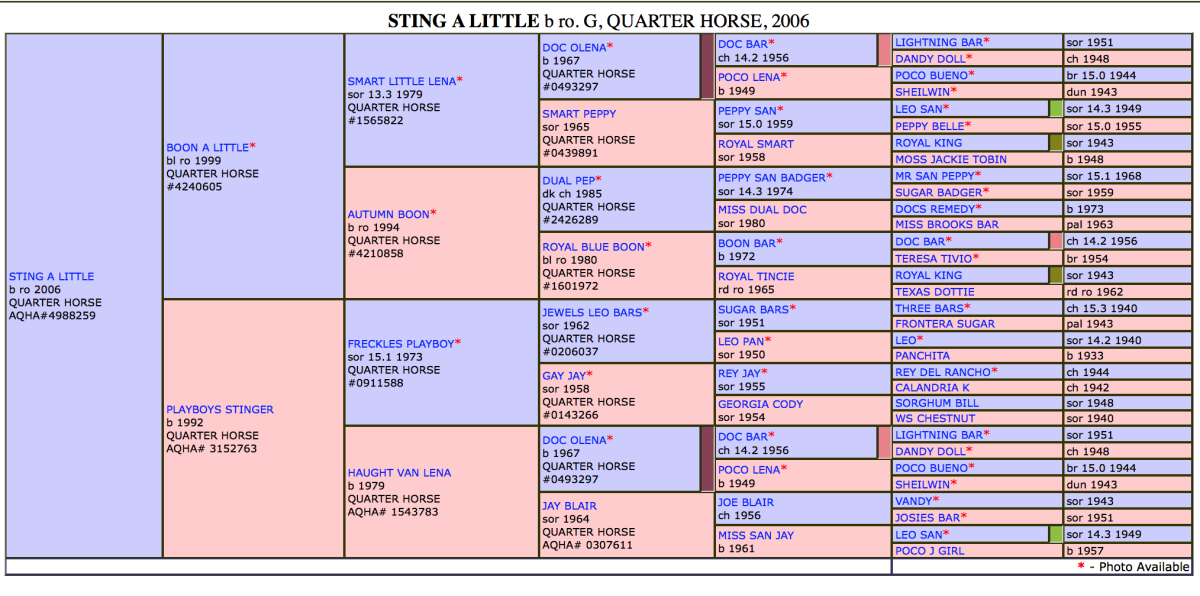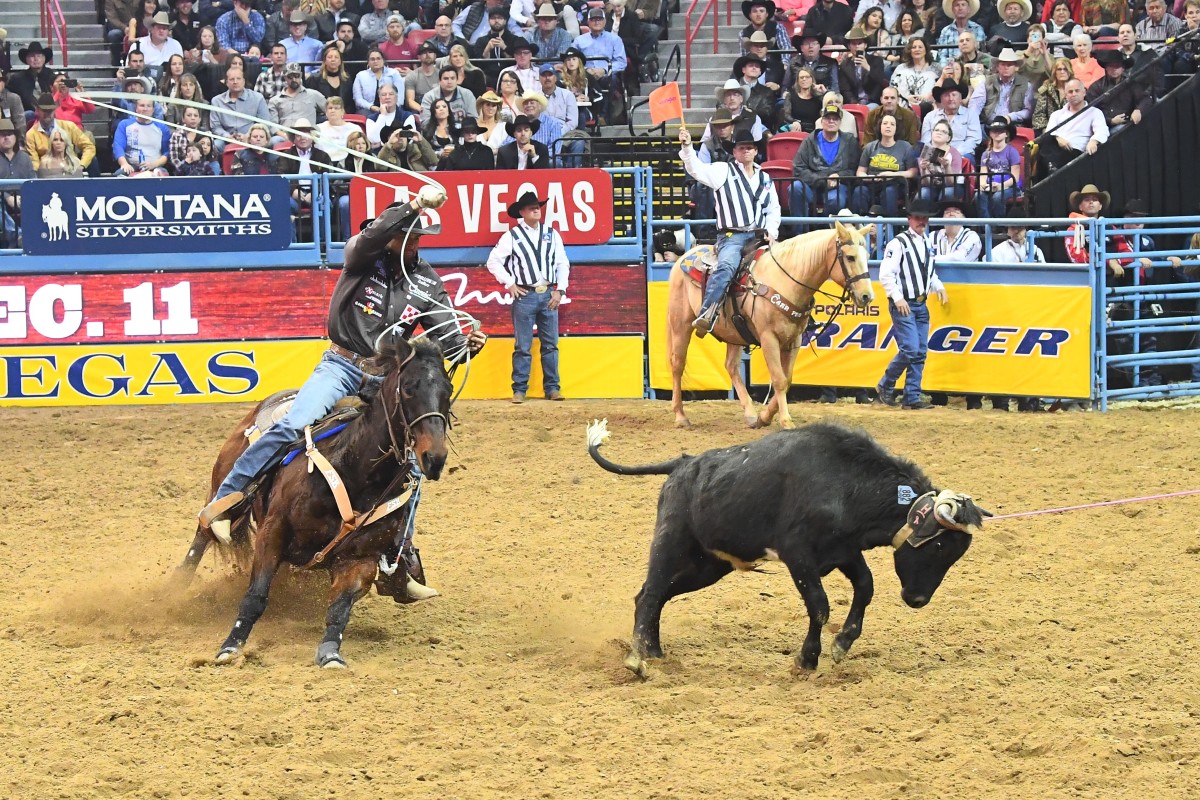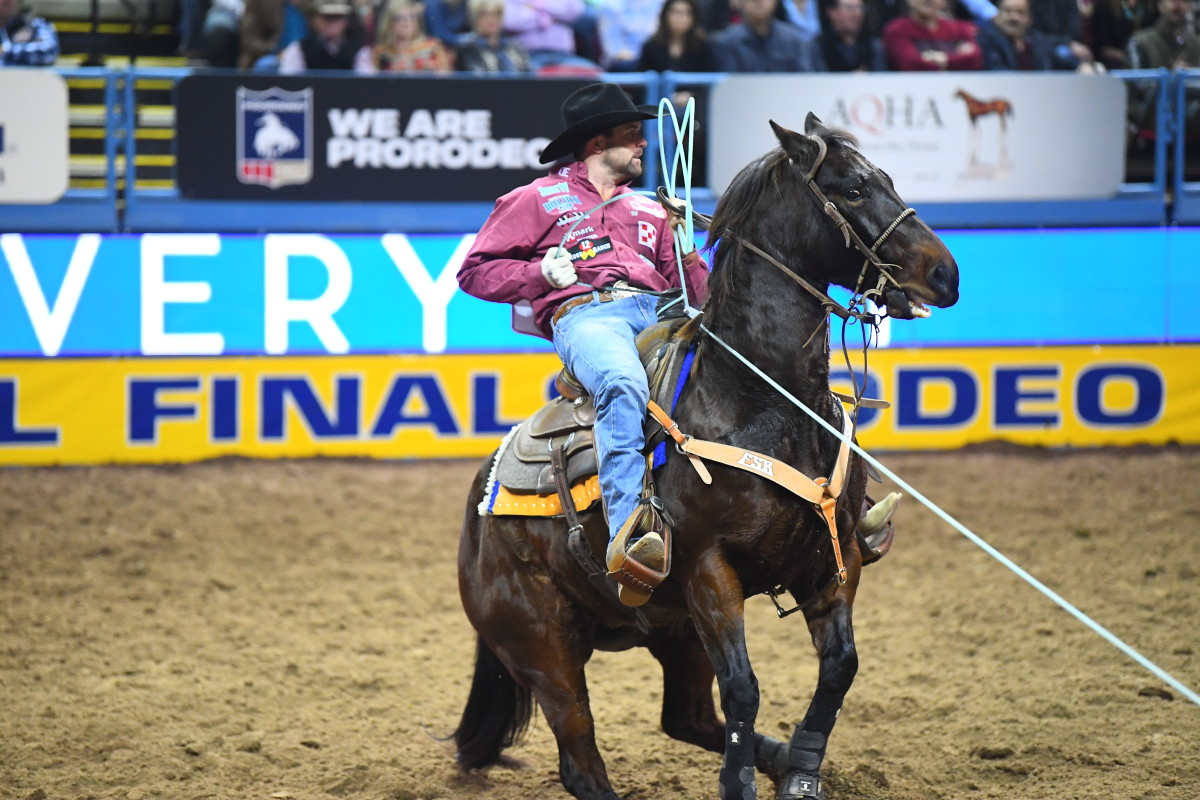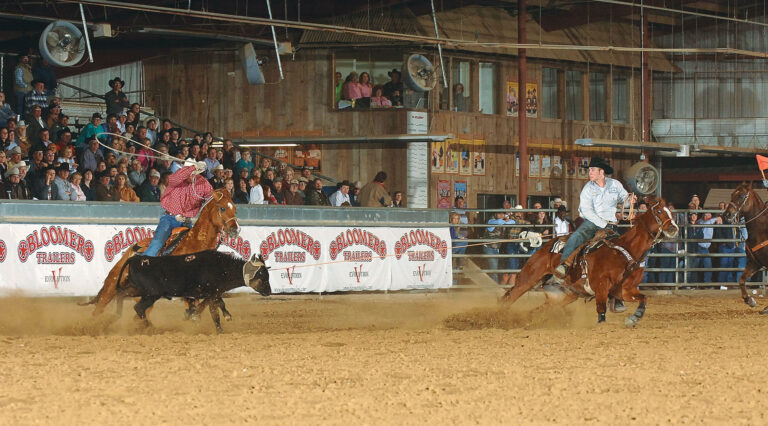Paul Eaves is leading the PRCA team roping world standings after six rounds of the 2018 Wrangler National Finals Rodeo, sitting second in the average with partner Clay Smith with a 21.90 on five head.
So far, Eaves has won $81,782.05 in Vegas, and he’s done it aboard a horse he’s barely ever taken to a rodeo. Guapo, a 2006 AQHA gelding registered as Sting A Little, was a last-minute decision for Eaves that’s resulted in the best NFR he’s had so far.
“Just in the last few weeks, he just really started to feel better than anything else,” Eaves, who usually rides a sorrel gelding named Casino that came from Jhett Johnson, said. “My sorrel felt good, but there was something about how Guapo felt that made me want to ride him.”
Eaves is partnered on the horse with Laredo, Texas businessman Pancho Chamberlain. A few years ago, Eaves went to teach a roping school at Chamberlain’s house, where he first noticed Guapo. Chamberlain was riding the bay-roan gelding he’d recently bought at the San Antonio Performance Horse Sale as a 4-year-old.
“I was looking through the catalog and I came across him,” Chamberlain remembered. “He was a cutter and barrel horse as a 4-year-old. I saw the girl ride him around, and he had a really good handle and real good bone. I paid $6,500 for him so I think I got a pretty good deal.”

The girl selling him was Lydia Butler, a barrel horse trainer from Aubrey, Texas. Butler had bought him from Brad Teal, a client of her cutting-horse-training father, as a 3-year-old. She’d been trying to make him a barrel horse, but after two years, she had conceded that he needed a new job.
“He was cruising 2D times as a 3-year-old,” Butler said. “But he just didn’t care. He just wasn’t interested. It was frustrating for me. I messed with him and messed with him and hauled him all over. He was an eye-catcher and everybody loved him. He’d win a check, and then not feel like it the next time. He was my first-ever barrel horse reject. It killed me putting him that sale. I didn’t want to do it, but I didn’t have any use for him. I knew the talent that he’d be good at something, but it wasn’t running barrels.”
Chamberlain dedicated himself to making heeling that ‘something’ Guapo was good at. Guapo was broke and had great footwork, and always wanted to go to the cow, so when he told Butler he planned to start him on the heel side, she thought it might work.
“About six months later, I put up the horse I was hauling and went with Guapo, win lose or draw,” Chamberlain said.
Eaves tried to buy the horse early on, but Chamberlain didn’t want to part with him. He didn’t know Eaves very well, and Guapo was his main horse. But over time, Eaves gave more lessons at Chamberlain’s house and the two became friends. Eaves’ main horse Cadillac was slowing down, and the Missouri heeler was in a bind.
“He wanted to help me out, and he asked what would help me most, as far as sponsorship,” Eaves said. “I told him that horse would be the biggest help to me. He didn’t let me buy him, but I’ve had him the last however long. He just recently in the last few months has let me pay for half of him.”

Chamberlain rides the horse on and off, but he’s mainly been Eaves’ jackpot mount. He’s hauled him for years, but Eaves was never ready to ride him at the rodeos. That is, until Eaves figured out a little something about his riding that was causing him some headache. Guapo came into his own in just the last few months before the Finals when his jockey finally got out of his way, Eaves admitted.
“He wasn’t feeling very good at the rodeos,” Eaves said. “It was me—that horse is really smart, and I was just trying to make him be too perfect and trying to make him be too fancy. I was not allowing him to react and be what he needed to be at the rodeos. At the rodeos, it didn’t work. Really, more than anything I kind of let him—before I would really try to make his hip up under him going down the arena and through the turn and really keep it drove under and to the left. I’ve always done that on all my horses. But he understood what I wanted, and he made sure he did it to a point where he couldn’t work very good. His shoulders would go to the right and be in my way. Most horses would ignore what I’m saying, no better than I ride. Most would do their own thing anyway. But he would do it and get in my way the way I was making him work. I just let him straighten up. That just let him work to put his shoulders in the right spot to where he’s tracking right. I got that lined out, and I could have been riding him two years.”
Now, while Chamberlain watches at home in Laredo, he’s seeing his horse become the super-star he always believed he was in front of hundreds of thousands of rodeo fans.

“He looks amazing,” Chamberlain said. “For Casino, Paul’s great horse, to be watching for the stall says a lot about what that horse is doing. Hopefully we’ll get a world title out of it.”
Eaves partner missed in the first round, but since then he’s been 4.00, 4,30, 5.30, 3.80 and 4.50, throwing mostly on the first hop. He picked Guapo because of how hard he leaves the corner, but since he’s got to Vegas, he’s realized the horse is making a difference in another, maybe even more important part of the run.
“I’m throwing faster than I ever have at the NFR because of how that horse wants to ride the turn more than anything,” Eaves said. “He wants to stay away from them, and he wants to keep his distance through the turn. When a horse does that, it’s a green light to throw. I’ve never been that comfortable on anything here since 2014 on my grey. And that’s really what it is.”








